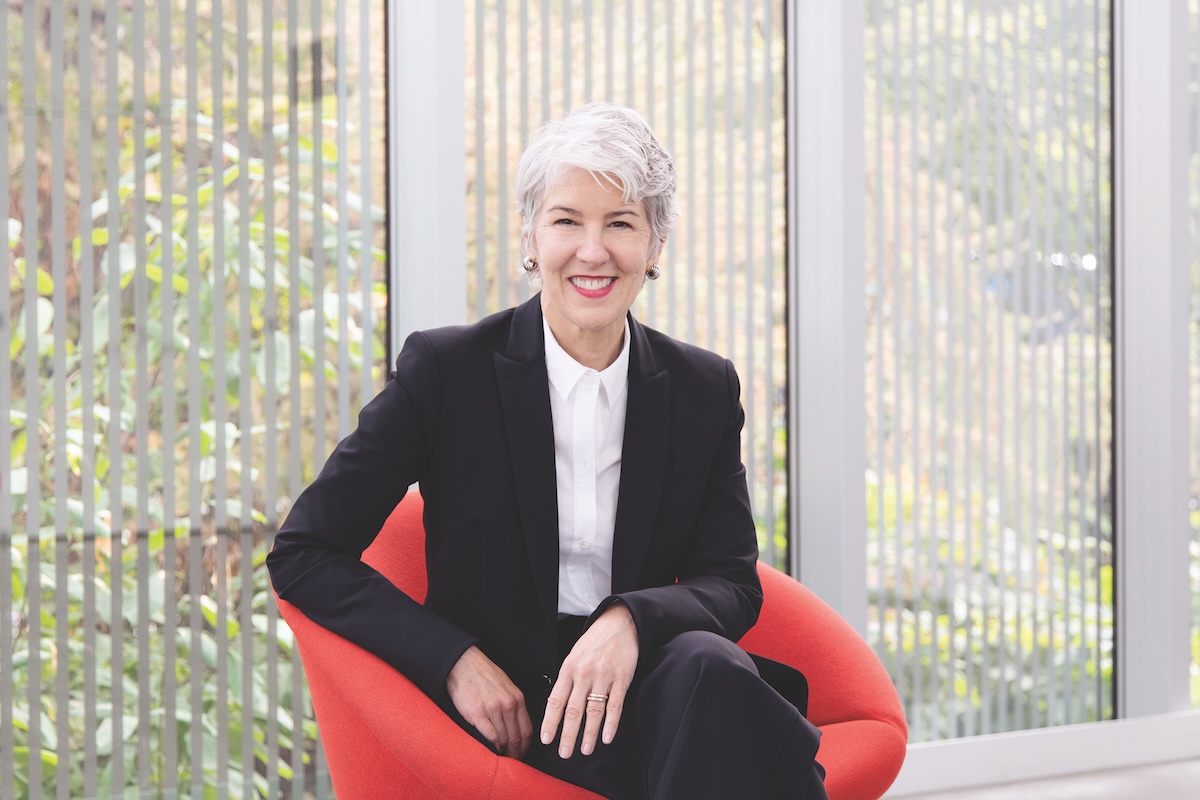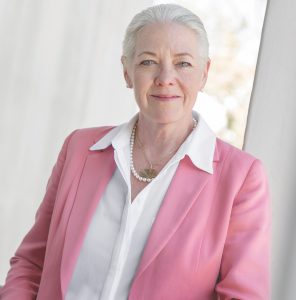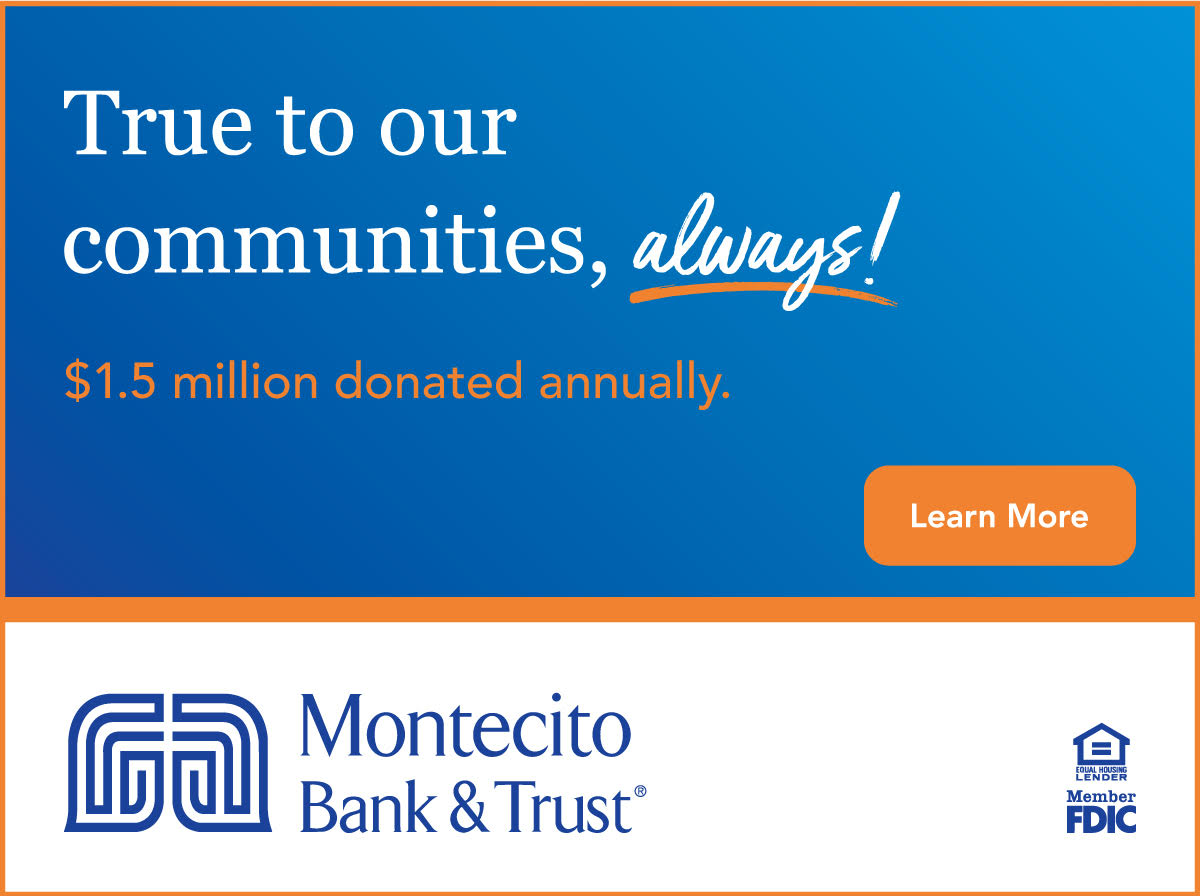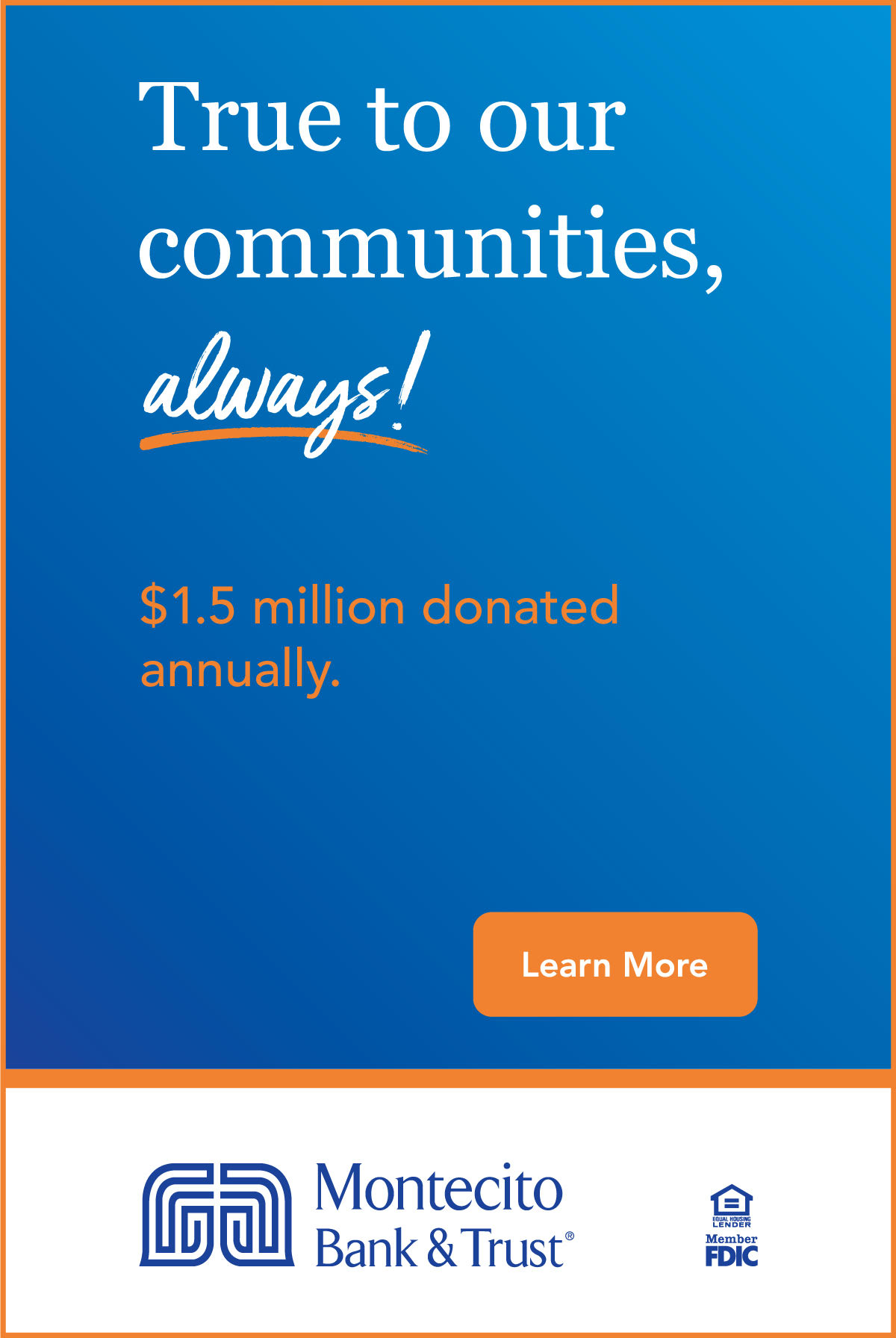Amada Cruz: The Connection Between Art and Life

Amada Cruz is still fairly new in her role as director of the Santa Barbara Museum of Art (SBMA), having started in November of 2023, but she’s already making her stamp and bringing her credible sensibilities to maintaining SBMA as a world-class destination for art lovers, young people, academics, and especially the Santa Barbara community.
Born in Cuba, her family moved to the United States when she was only nine months old, with home ties to Chicago, New York, and Miami. While studying art history at NYU, she secured an internship at the Guggenheim Museum leading to an assistant curatorial role there that set things in motion for a career as a champion of contemporary art. She specialized in working as a curator of younger artists for nearly 20 years before graduating to managerial roles.
Prior to coming to SBMA, Cruz served as director of both the Phoenix Art Museum and then the Seattle Art Museum (beginning the latter position just months before the COVID pandemic struck). She brings her lifelong devotion to art to her new role, happy to be an ambassador for artists and for Santa Barbara’s art community.
She loves SBMA’s simple and profound mission to integrate art into the lives of people and how it’s not just an academic institution, but it’s also a meaningful place to the public.
Q: Who are the artists that have made you love art so much that you’ve devoted your life to this line of work?
Amada Cruz: That’s a hard question to answer because I’ve worked with so many really good artists, but the one that was most impactful to me was Félix González-Torres, who sadly died of AIDS. Like me, he was a Cuban artist, but raised in Puerto Rico, and as an adult moved to New York City to become an artist. I saw his very first exhibition at a gallery in SoHo in New York. At the time, I was an assistant curator at the Hirshhorn Museum and we hit it off and I became really interested in his work. I worked with him at a large exhibition at the Hirshhorn; it was a collaboration with another curator at MOCA in Los Angeles and the Renaissance Society in Chicago – a three-venue exhibition.
It was a wonderful experience, and I feel like I learned so much from him. Not just how artists work and what they care about, but also he had a lot of personal integrity. He was an activist who had AIDS, but continued to make wonderful work and be an advocate for other artists as well. (And he’ll have an exhibition at the Smithsonian this October!)
Q: What’s the state of visual arts today and what does it mean at this time to run an institutional center for art?
A: Well, I’ve been doing this for a while. When I was coming up in the art world as a curator, it was a smaller art world. There were fewer artists, fewer collectors of contemporary art. Museums were certainly featuring exhibitions of contemporary art, but much less than now.
Now there’s just more of it. It’s a more diverse group of artists – that’s the plus side of it – but it’s harder to get your arms around it. There are more curators featuring contemporary art, and more programs for being an artist. It’s become just so vast at this point.
Q: What sort of programs does SBMA run to maintain engagement with the artist community?
A: Santa Barbara Museum of Art has a wonderful legacy of supporting living artists, let’s use that term. We are certainly moving even more into that direction now. We have a fantastic contemporary art curator who’s the Chief Curator, his name is James Glisson. He leads the contemporary art program, working with living artists whether they’re local or international artists, but we also show contemporary artists in other areas, like photography and new media. Right now we have two video installations by living artists. The program has been very supportive of artists for a long time, but that’s probably going to be a growth area for us because it is a growth area for just about every museum at this point.
And there’s always a lot of interest. We know that whenever we have an artist speaking in our theater that we’re going to get a big crowd. People want to hear from the actual creators of their works of art.
Q: Beyond ticket sales, what defines a successful art exhibit?
A: Such a good question! We definitely look beyond ticket sales. It’s very hard to measure engagement, but I like to ask the question of whether we think an exhibition was successful in terms of audience reaction. And I don’t mean necessarily that every person who walks through that door loves the exhibition, but did we stimulate some sort of conversation or engagement? The public will always tell you what they think. We definitely get feedback in real time.
A show that actually does motivate people to think in new ways, to even just reach out to us to give us their opinion – if you move someone to do that, that’s a successful exhibition.
And then of course there are the museum-centric things that we think about. Like, did the installation look really good? Were we able to actually tell a story? Every exhibition is really a story. Did we tell the story of the artist’s work, or the underlying themes evident in the work? Did we communicate that clearly? We sort of do a debrief after each exhibition and ask all those questions. All those questions afterwards are important.
The other immediate response is if you start getting other museums interested in taking the exhibition. Sometimes another museum will approach you and ask if it’s available for travel. You’ll know then obviously it’s a desirable thing. You’re making something that is special to people that people are finding meaning in.
Are we producing meaning? That’s hard to measure, but feedback from the public and that can be very useful.
Think about the competition for attention out there! For someone to be motivated to respond to you, that’s a powerful thing.
Q: You’ve had leadership roles at art museums in bigger cities. Are there any challenges or benefits to leading a museum in a smaller city?
A: When I first moved, people told me Santa Barbara is a small city and everyone knows each other. I thought that was really interesting and there is some truth to that, although it is a city that’s growing and many people are moving in from out of town.
Because it’s a more manageable city with a local audience, I think it’s probably easier to maintain your relevance to a local community. It’s just a smaller community. But it can be very meaningful.
We should be able to identify what the various communities of Santa Barbara are more efficiently, let’s say, than if we were in New York City. You can get to know the communities of a smaller place more easily. Building community should be easier.
The trick for Santa Barbara Museum of Art, which has a world-class collection, is to maintain local relevance and make it feel like it’s their museum, their home. But we also want to be globally ambitious, so you’re bringing in and featuring the best art from around the world to a local community.
Q: Is there a balance between the drive to discover new talent (or fostering up-and-coming talent) alongside popular taste? Do you ultimately want patrons to follow your lead and trust where you’re taking them? Or is there also some amount of giving the people what they want? (Perhaps they overlap.)
A: I think it overlaps. I certainly want to develop that level of trust that no matter what we show, people will want to come and see it because they trust us to make decisions that will be relevant to them, but I also believe it’s fine and fair to show people what you think they want. For example, we happen to have a really fantastic collection of French 19th-century paintings, including four paintings by Claude Monet. Santa Barbara is not a big city, but we have four Monets! That’s the same amount of Monets, by the way, as the Getty or LACMA. It’s an extraordinary visual resource for many people and most people love Monet, so I am happy to show our four Monets. And we will be showing, in the future, an exhibition on French Impressionism, which will be from another museum which is giving the people what they want, but we want it, too.
We offer a vast array of experiences, from historical works to contemporary art. We have lots of different media, we have fantastic Asian art collections, we always want to show that. So I feel like this kind of museum with a large, eclectic, and global collection offers a lot to many different types of people.
I’d also like to think that if you go to see the Asian art collection, you might serendipitously run into something you weren’t expecting and realize you like that as well.
It’s a balance and a really important thing, introducing people to something new, but honoring what they want to see as well.
Q: Are there any duties that come with museum leadership that are less obvious? How many roles do you play?
A: What’s interesting about being a museum director is that you have to be involved in so many different things. Every day is different.
I lead the artistic vision, but I’m not the only one who picks the art because we have a curatorial team. I am a major fundraiser, though we have a development department. I also have certain management responsibilities that people maybe don’t think about, like managing a staff of 100 people and working with the board of directors. I’m also the main ambassador for the museum. Because I’m new here – though I’d do this anyway – in my ambassadorial role, I go out and see a lot of people, meet a lot of folks, and I try to be supportive of the other nonprofits in the area. I’m making connections because all of this is based on making relationships.
It’s all about relationships. And that’s the part of the job I really enjoy. I think it’s fun to meet people and have a vast network of people supporting the museum – in various ways. What’s important to me is that people are seeing what we are doing. I want people to come. That’s what I want. That’s the most important thing.
Q: Can you talk about a time when you partnered with other people, institutions to create something for the community?
A: We have a phenomenal education department. They are the ones who partner the most. They have incredible community outreach. We looked at what we were doing in that area and realized that last year we served 26,000 people in the education programs, including 17,000 students. That’s students going to our museum and us going to them. We also work with 500 teachers, 131 volunteers, and 40 community partners that we work with. There’s a lot of partnership and oh, I love collaborating with others.
We have an exhibition that opens October 5 called “Friends and Lovers.” It’s a collection of works by contemporary artists, celebrating works by LGBTQ artists, and we’re partnering with the Pacific Pride Foundation. That’s one example that’s happening really soon, because this kind of thing really happens throughout the year.
Q: Tell me about the experience of seeing art with your own eyes as opposed to catching it on your Instagram feed. (I want to hear it from your point of view.)
A: What we offer to people is a viewing experience that’s an authentic experience of looking at art. It’s not mediated by a screen, or goggles. It’s authentic. It is you in a space looking at a work of art. If it’s a painting, you are seeing every brushstroke, and if you spend a little time looking, you start to think about how the artist made that work. You are very much in the moment, close up with the work, getting that authentic experience.
Now, I’m not against having things on Instagram. I actually love Instagram because it’s visually oriented. I think it’s a great introduction to what artists and museums are doing. Discover us on Instagram and then come see the actual work of art.
One of my favorite Instagram accounts is for the archeological dig at Pompeii. They’ve unearthed so much from Pompeii and it makes me want to go there. In that case, it’s a magnet for interest.
I don’t think it’s a competition. The more artistic images out there in the world, the better.
Q: Is there anything else you feel people should know about SBMA?
A: Every second Sunday of the month we are open free of charge to locals, that is residents of the tri-county area: Santa Barbara County, Ventura County, and San Luis Obispo County. I learned from my staff that we should consider our neighboring counties. It’s wonderful to be able to offer that to everyone.
I’m also very interested in all the outreach and education programs. That’s exactly where we make that connection between art and life, which is our mission. We’re very interested in having donor support for kids programs and adult education; there are so many ways to support the museum, making very direct contacts between the audience and the art. We’re serving 26,000 people in our education programs, but we can certainly increase that number with more support.


